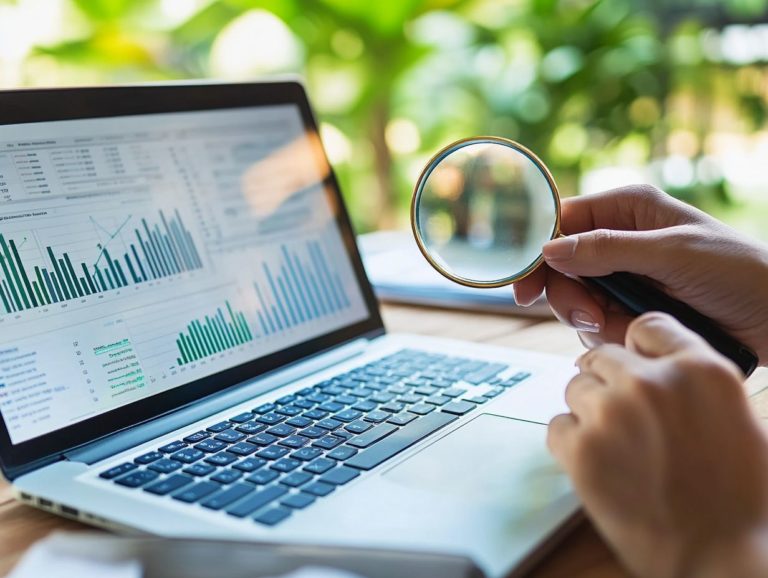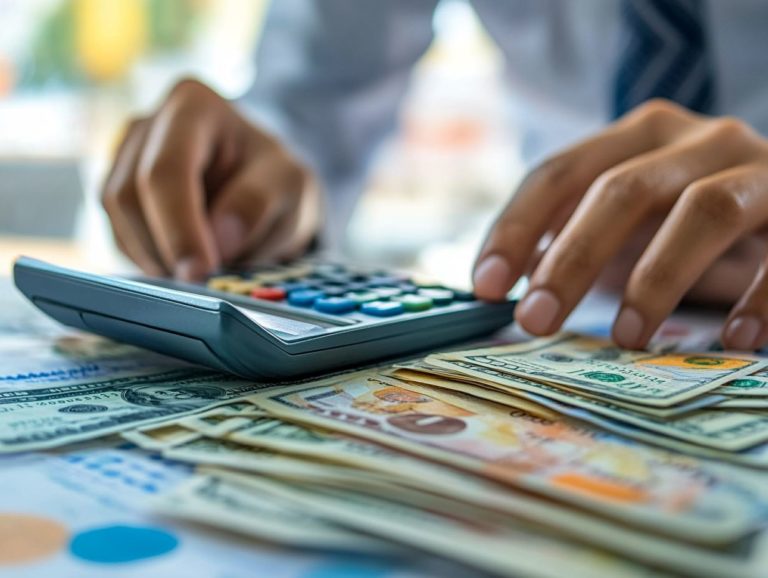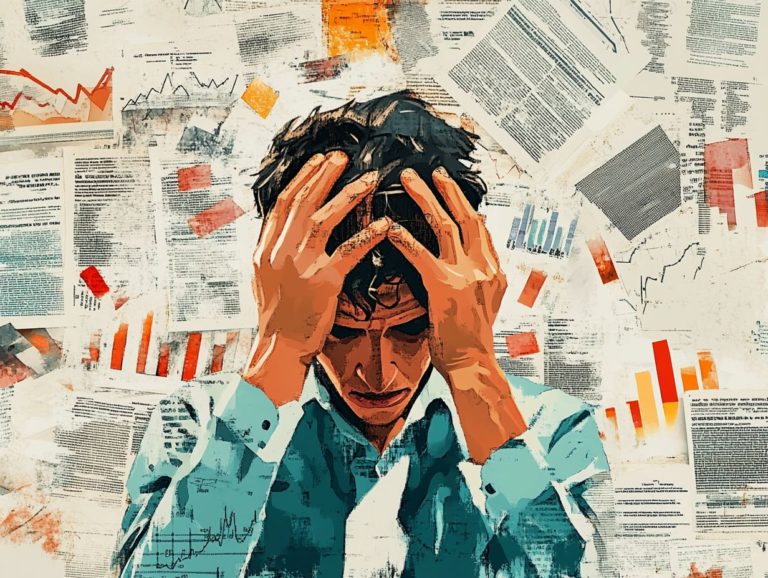Risk Management Best Practices for Collectibles
Collectibles can be both a passion and a lucrative investment, but navigating this landscape presents its fair share of challenges. You need to understand the potential risks involved, from market fluctuations to the threat of physical damage, which is crucial for any collector.
This article delves into essential strategies for assessing and mitigating these risks. We cover everything from insurance options and proper storage techniques to the importance of documentation and appraisal.
Whether you re a seasoned collector or just starting your journey, you ll discover valuable tips to make informed buying and selling decisions. Join us as we unveil best practices to protect and enhance your treasured collectibles!
Contents
- Key Takeaways:
- Understanding the Value and Risks of Collectibles
- Assessing and Mitigating Risks
- Insurance for Collectibles
- Proper Storage and Handling
- Documentation and Appraisal
- Best Practices for Buying and Selling Collectibles
- Frequently Asked Questions
- What are some risk management best practices for collectibles?
- Why is it important to properly store and protect collectibles?
- Is it necessary to insure collectibles?
- What should be included in an inventory list for collectibles?
- How often should the market value of collectibles be assessed?
- Are there any other risk management best practices for collectibles?
Key Takeaways:
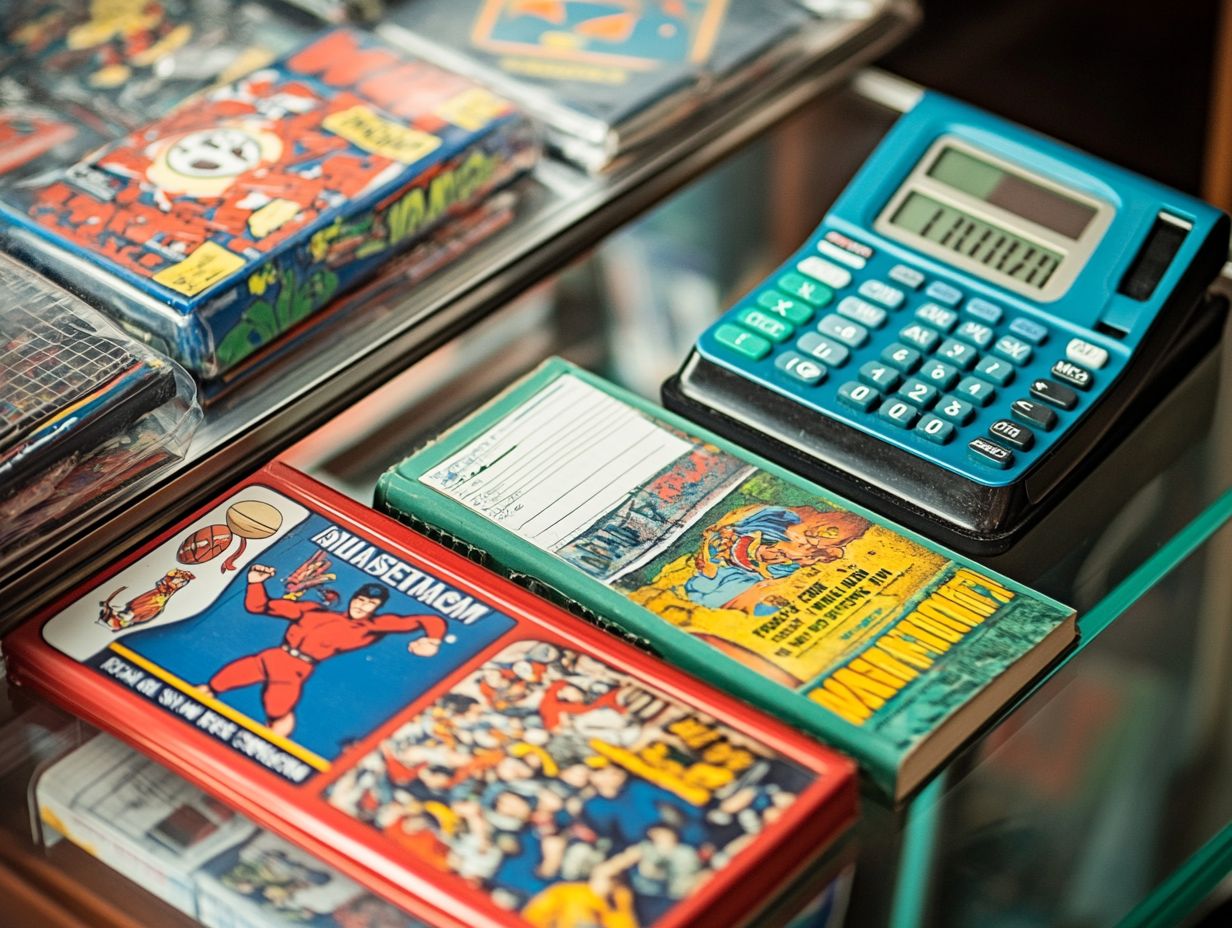
Collectibles carry both financial and sentimental value, making it crucial to assess and mitigate risks associated with them.
Insurance coverage for collectibles is essential for protecting against unexpected damages or losses.
Proper storage and handling techniques, along with appropriate documentation and appraisals, are key to preserving the value and condition of collectibles.
Understanding the Value and Risks of Collectibles
Understanding the value and risks associated with collectibles requires understanding their emotional value. This includes valuable items like jewelry and art, as well as niche collectibles such as vintage clothing and rare trading cards.
It is essential for collectors to remain attuned to their emotions and the financial implications connected to their cherished possessions.
Assessing and Mitigating Risks
Assessing and mitigating risks associated with your collectibles requires a strategic approach. Ensure you have the right protective measures in place to safeguard your valuable items from threats like natural disasters and improper storage.
Understand the coverage limitations of your insurance policy designed specifically for collectibles, giving you the power to engage in effective risk assessment and loss mitigation strategies.
Identifying Potential Risks
Identifying potential risks that could threaten your collectibles is a crucial step in effective risk management. Factors such as natural disasters and improper storage practices can lead to significant loss of value or essential information.
Act now! Your collectibles are at risk from environmental hazards like humidity, temperature fluctuations, and pollution, all of which can lead to deterioration over time.
Human error also plays a significant role; something as simple as improper handling or inadequate documentation could result in severe financial consequences. Insurers frequently encounter claims related to damage caused by these factors, underscoring the importance of regularly assessing the risks associated with your personal property.
Therefore, prioritize proper storage methods and explore insurance options specifically designed to cover potential losses to your valuable collections.
Implementing Risk Management Strategies
Implementing ways to protect your collectibles is crucial for safeguarding your valuable items. This means utilizing the right protective measures during inventory assessment, transportation, and storage.
Start with careful planning and organization. Begin with a comprehensive inventory process that accurately documents the condition and value of each collectible. By regularly reviewing and updating this inventory, you can swiftly identify any potential issues, such as deterioration or missing items.
In terms of transportation, safe practices are essential. Using cushioned packaging and secure transportation methods is crucial to minimize the risk of damage during transit. Together, these thoughtful steps not only assist in mitigating loss but also play a vital role in preserving the integrity and value of your treasured collectibles over time.
Insurance for Collectibles
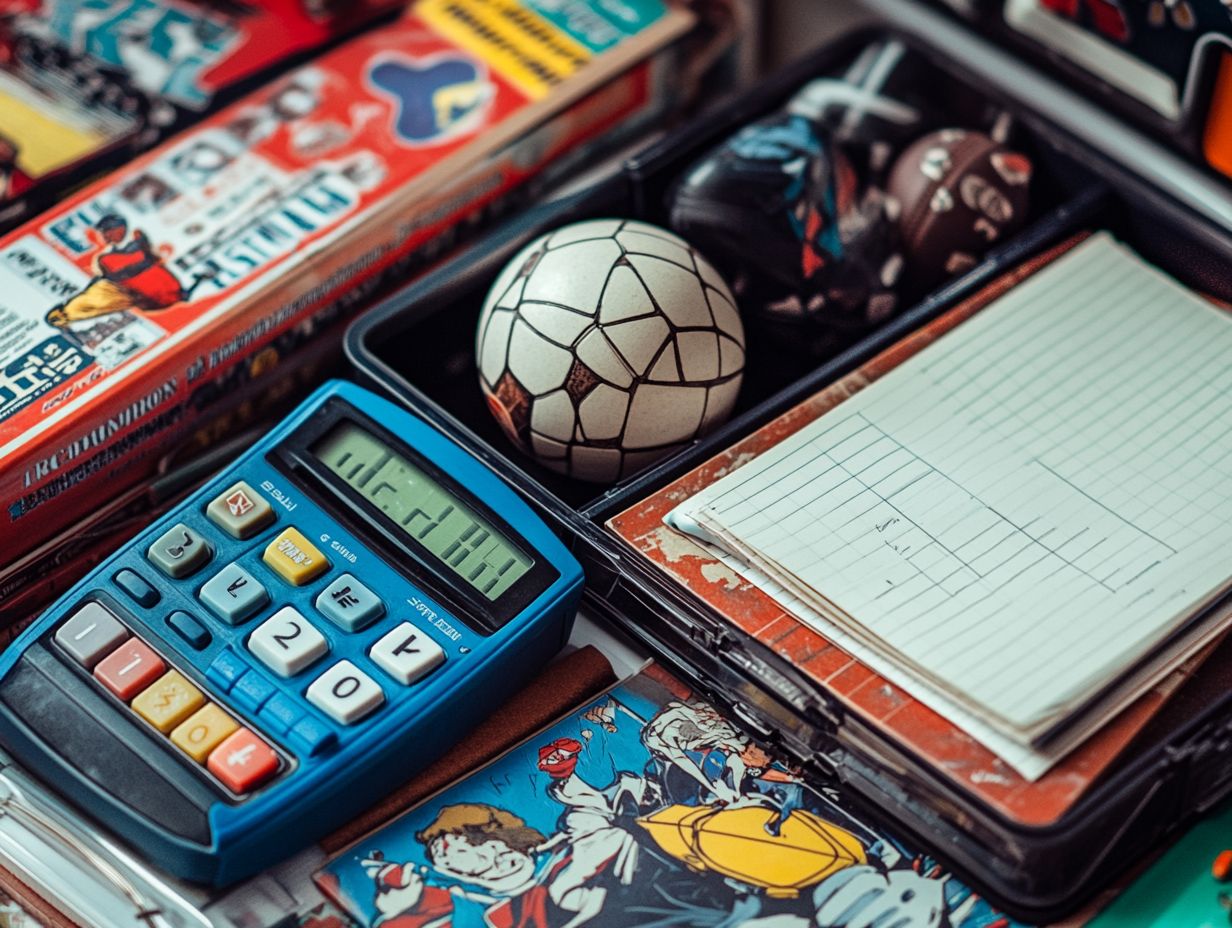
Protect your beloved collectibles with the right insurance! Obtaining insurance for your collectibles is essential, as standard homeowners policies often fall short in adequately covering high-value items. This is where insurance companies that specialize in collectibles come into play, offering valuable article policies that cater specifically to collectors like you.
It’s important to understand the coverage limitations of your existing policy to ensure that unique treasures be it rare jewelry or exquisite artwork are fully protected against loss or damage.
Types of Insurance Coverage
You have a range of insurance options specifically designed for collectors, ensuring that your valuable articles are adequately protected through specialized policies from reputable insurance providers. These policies cover fine art and other collectibles, addressing the unique risks associated with paintings, sculptures, jewelry, and more.
For those with a passion for antiques, specialized plans cater to the irreplaceable nature and potential appreciation of vintage items. Each type of coverage offers distinct benefits, including tailored valuations and restoration services.
However, it’s crucial to consider factors such as deductible levels, evidence of ownership history, and the need for regular appraisals to maintain accurate coverage. This way, not only are your items safeguarded, but their true worth is also continually acknowledged.
Proper Storage and Handling
You understand that proper storage and handling of collectibles are crucial for their long-term preservation. By implementing effective environmental controls and utilizing appropriate display techniques, you can significantly minimize the risk of damage caused by inadequate storage conditions.
Preserving the Condition of Collectibles
To keep your collectibles in great shape, use smart preservation techniques, including art conservation methods and protective measures designed to ensure their longevity. These techniques are vital not only for maintaining the aesthetic appeal of your items but also for safeguarding their value over time.
For example, vintage clothing should be stored in breathable materials, kept away from direct sunlight to prevent fading and degradation. Similarly, collectibles like trading cards thrive when housed in protective sleeves, shielding them from dust and moisture.
Regular assessments and proper cleaning methods are essential for your artwork to defend against deterioration. By prioritizing ongoing care and employing the right preservation strategies, you can ensure that your treasured items remain a source of enjoyment for generations to come.
Documentation and Appraisal
Documentation and appraisal of collectibles are vital to their valuation, creating a process that captures market value while encompassing the emotional significance these items hold. This dual approach profoundly influences collectors decisions, guiding them in their pursuit of meaningful acquisitions.
The Importance of Proper Documentation and Appraisal
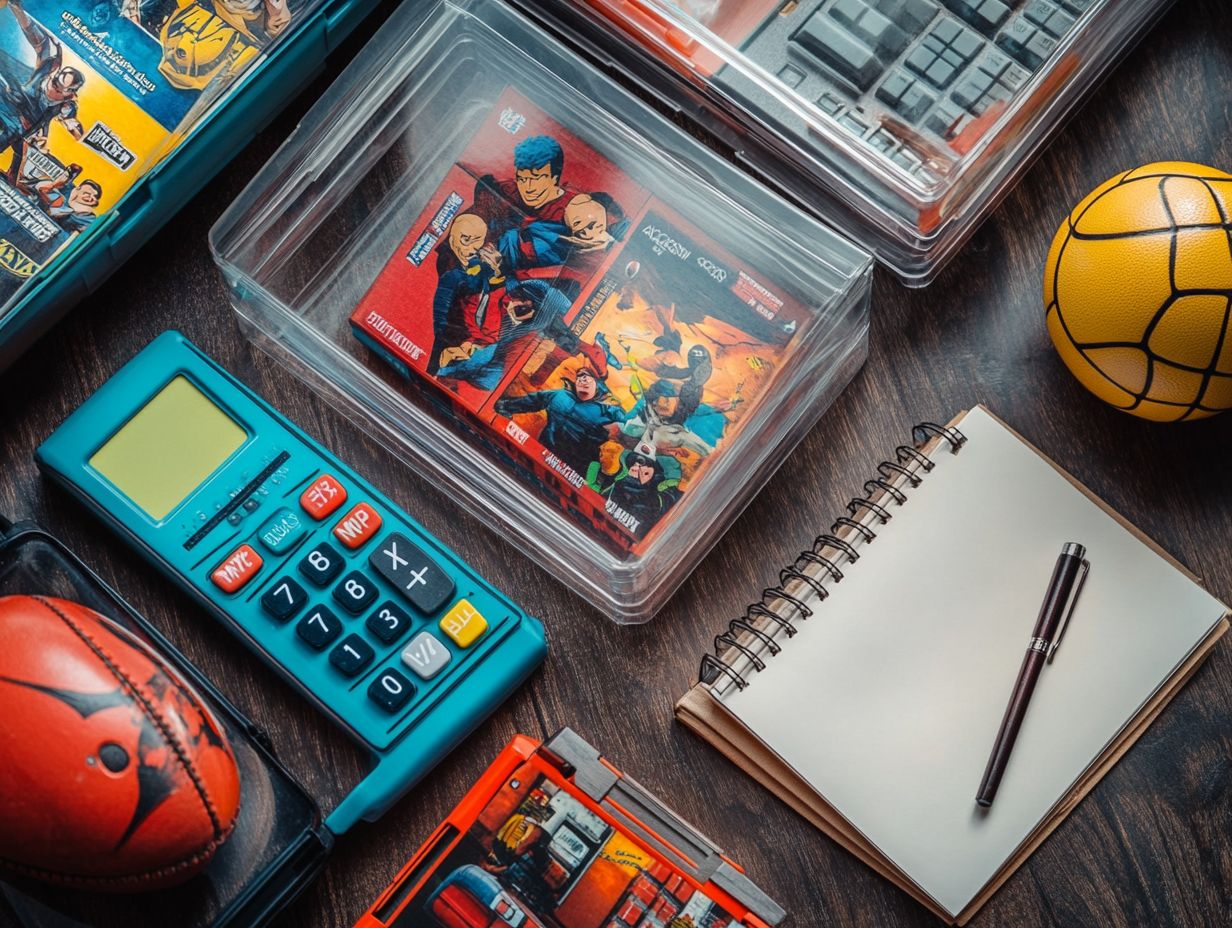
Proper documentation and appraisal are crucial for you as a collector. They ensure your valuable items are accurately valued, which is essential for meeting insurance needs and for navigating potential claims. Gather these important documents:
- Proof of purchase receipts
- Previous appraisal reports
- Detailed photographs of each item
These documents not only help establish ownership history but also provide compelling evidence of the authenticity and condition of your collectibles. In the appraisal process, certified appraisers are invaluable, as their evaluations can significantly influence your insurance policies. A precise appraisal can lead to better coverage, while an undervalued item might leave you underinsured during claims, potentially resulting in financial loss.
Thus, having the right documentation in place is vital for both your protection and peace of mind. This ensures you re ready for any claims that may arise!
Best Practices for Buying and Selling Collectibles
Understanding the best practices for buying and selling collectibles is crucial for you as a collector. This knowledge will empower you to navigate the complexities of the market with confidence while safeguarding both the sentimental and market value of your items, which are often influenced by emotional appraisal.
Tips for Safe Transactions
To ensure safe transactions when buying or selling collectibles, it’s essential to use safety steps to reduce risk and foster trust between parties.
Start by thoroughly verifying seller credentials. This may involve examining their history in online marketplaces or reading reviews from previous buyers.
Using secure payment methods, like PayPal or escrow services which is a method where a third party holds funds until both buyer and seller are satisfied further safeguards both you and the seller from potential fraud.
It s also wise to maintain comprehensive documentation of the transaction, including receipts and photographs of the item. This can help prevent disputes down the line.
Being careful and detail-oriented helps create a secure environment that facilitates smooth exchanges and enhances confidence in the collectibles market.
Summary of Key Points
Understanding the value, risks, and best practices associated with collectibles is essential for you as a collector. This knowledge enables you to navigate the marketplace effectively while protecting your investment.
By adopting accurate valuation methods, you can ensure fair transactions and gain valuable insights into market trends. Thorough insurance checks and protective measures are crucial in safeguarding your prized possessions from unforeseen circumstances.
Following established transaction practices not only enhances transparency but also fosters trust within the collecting community. This holistic approach gives you the power to make informed decisions, ultimately leading to a more secure and enjoyable experience in the ever-evolving world of collectibles.
Frequently Asked Questions
What are some risk management best practices for collectibles?

Some risk management best practices for collectibles include properly storing and protecting items, insuring valuable pieces, creating an inventory list, and regularly assessing the market value of items.
Why is it important to properly store and protect collectibles?
Proper storage and protection can help prevent damage or loss of collectibles due to factors such as environmental conditions, pests, or accidents. This can help maintain the value of the items and protect your investment.
Is it necessary to insure collectibles?
While it is not mandatory, insuring valuable collectibles can provide financial protection in case of damage, loss, or theft. It is important to research and choose a reputable insurance provider that offers coverage specific to collectibles.
What should be included in an inventory list for collectibles?
An inventory list should include a detailed description of each item, its current condition, purchase price or estimated value, and any supporting documentation such as certificates of authenticity or appraisals. It is also helpful to have photos of each item.
How often should the market value of collectibles be assessed?
The market value of collectibles can fluctuate, so it is recommended to assess the value at least once a year. This can help ensure that items are adequately insured and assist in making informed decisions about buying or selling.
Are there any other risk management best practices for collectibles?
Other best practices for collectibles include keeping detailed records of purchases and sales, minimizing exposure to potential risks, and seeking expert advice when necessary. It is also important to research and understand market trends and potential risks specific to certain types of collectibles.


